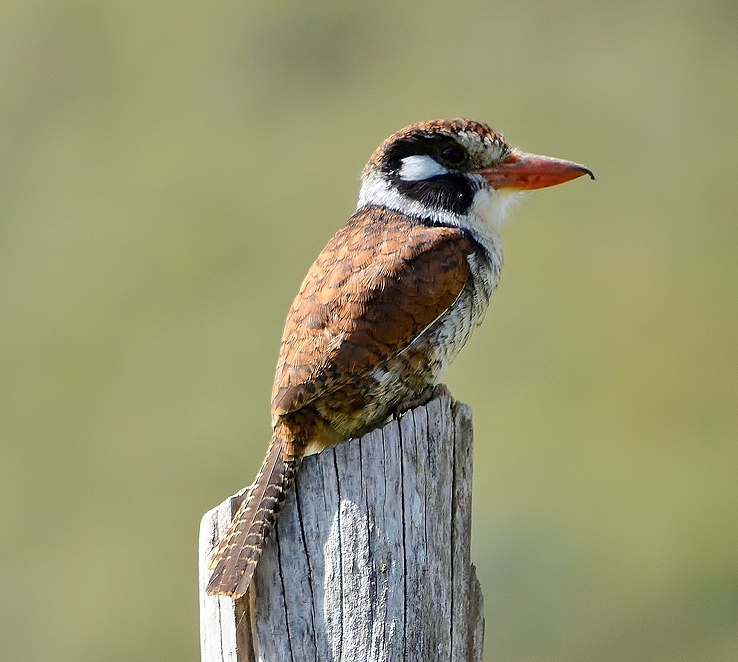 |
| Photo by Mario Martins (Flickr) |
Common name:
white-eared puffbird (en); joão-bobo (pt); tamatia chacuru (fr); chacurú cara negra (es); weißohr-faulvogel (de)
Taxonomy:
Order Galbuliformes
Family Bucconidae
Range:
This South American species is found is central and southern Brazil, in Bolivia, in eastern Paraguay and marginally into northern Argentina.
Size:
They are 18-20 cm long and weigh 60-65 g.
Habitat:
The white-eared puffbird is mostly found in dry forests and woodlands, namely in cerrado habitats, but also in moist forests, dry scrublands, plantations, pastures, arable land and even within urban areas. They are present from sea level up to an altitude of 2.500 m.
Diet:
These birds hunt insects and other arthropods, namely beetles, spiders, millipedes, centipedes and scorpions, and also small vertebrates such as lizards, frogs and small mammals.
Breeding:
White-eared puffbirds nest in a deep hole excavated by both sexes into a natural sand wall or road bank, or sometimes on levelled ground. There the female lays 2-4 glossy white eggs, which are incubated for about 15 days. There is no information regarding the length of the fledging period.
Conservation:
IUCN status – LC (Least Concern)
This species has a very large breeding range and is described as fairly common.
The population is suspected to be stable in the absence of evidence for any declines or substantial threats.







